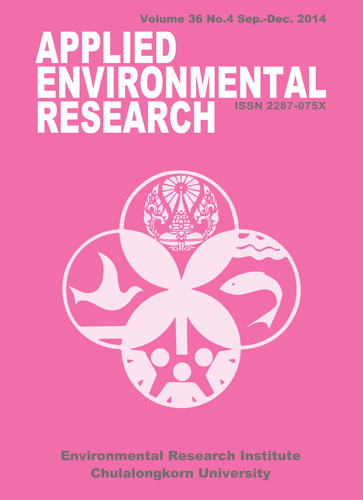The Environment Education Model for Sustainable Mangrove Forest Management in the Eastern Part of Thailand
Main Article Content
Abstract
The objectives of this study were to identify factors and environmental education models affecting community participation in sustainable mangrove forest management as well as to develop and evaluate participation in an environmental education model for sustainable mangrove forest management in the eastern part of Thailand. This study employed mixed methods and was divided into 3 steps. First, a quantitative method was used to identify facts and factors affecting local participation in solving mangrove deforestation problems. A multiple-step sampling method was used to select samples of households in the province of Chanthaburi. The second step employed a qualitative method using an environmental education model design. The aim of this step was to analyse an environmental education model for mangrove forest management in successful institutes and discover important compositions of environmental education. In the last step, the environmental education model arranged activities according to the process and was evaluated using a quantitative method for validation, efficiency, and appropriateness. The findings revealed that: 1) knowledge, understanding and experience in mangrove forest management were the most important factors affecting participation; 2) the most appropriate environmental education model for mangrove forest management in the eastern part of Thailand contained procedures and compositions as objectives of an environmental education model, content regarding mangrove forest management, workshop and evaluation procedures; 3) assessment of the environmental skills for sustainable mangrove forest management. It was found post workshop that the experimental group possessed environmental skills statistically different at 0.05 significance level.
Article Details

This work is licensed under a Creative Commons Attribution-NonCommercial 4.0 International License.
Published articles are under the copyright of the Applied Environmental Research effective when the article is accepted for publication thus granting Applied Environmental Research all rights for the work so that both parties may be protected from the consequences of unauthorized use. Partially or totally publication of an article elsewhere is possible only after the consent from the editors.

